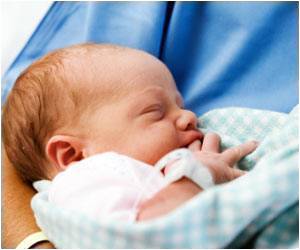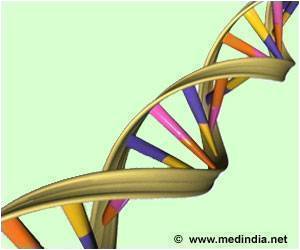Newborn screening (NBS) coupled with early treatment can improve the ability to walk in children with spinal muscular atrophy (SMA).

‘Newborn screening (NBS) may serve as a gateway to early diagnosis and more-timely access to treatment for spinal muscular atrophy (SMA) in children.’
Read More..




Read More..
Advertisement
What is Spinal Muscular Atrophy
SMA is a rare, genetic neuromuscular condition which predominantly develops in childhood. It is characterized by weak muscles and problems with movement which often lead to significant disability and sometimes death. Around one in every 40 to 60 people is a carrier of the main gene that causes SMA and an estimated one in 10,000 babies will be born with the absence of two essential genes, leading to disease. The age when symptoms appear is variable, but they may not be seen until the baby is several months old, and many individuals with SMA experience a delay in diagnosis. Although no cure for SMA exists currently, there are treatment options which can improve symptoms, especially when the child starts treatment prior to the development of clinical symptoms.Advertisement
What is Newborn Screening (NBS)
NBS is a public health program of screening in infants shortly after birth for conditions that are treatable, but not always evident in the newborn period. All newborns undergo NBS programs with parental consent, not just those with a family history of the disease.“Newborn screening has been proposed as the gateway to early diagnosis and more-timely access to treatment for SMA, however before now there was a lack of evidence on the impact of newborn screening for SMA beyond the non-diverse populations in clinical trials. Our study is the first to look at real world data on how children with SMA diagnosed via newborn screening fare compared to children diagnosed after symptoms develop. We believe our findings justify broader implementation of newborn screening for SMA,” says Dr. Arlene D’Silva, University of New South Wales, Australia
During the study, the health of 15 newborn babies diagnosed with SMA following a positive screening result between 1st August 2018 - 1st August 2020 (the first two years of the Australian pilot NBS for SMA program) was compared with that of 18 infants and children with SMA diagnosed following clinical referral with symptoms of disease in the two years before the pilot NBS for SMA program began (1st August 2016 - 31st July 2018). Out of the 15 children diagnosed by NBS, nine did not show any symptoms of SMA within the first few weeks of life and so were considered pre-symptomatic when they started treatment.
At two years post diagnosis, the children’s ability to sit, crawl, stand and walk were assessed by health professionals, along with some other measurement of movement ability. Three of the children (one diagnosed by NBS and two by symptom onset) in the trial entered palliative care during the two years post diagnosis.
Advertisement
Benefits of Newborn Screening for Spinal Muscular Atrophy
The researchers found that 11/14 of the children diagnosed by NBS were walking independently or with assistance at two years post diagnosis compared with only 1/16 of children diagnosed prior to the NBS pilot. The children diagnosed by NBS also scored better on average in other measures of movement ability and independence in everyday tasks than the children diagnosed by symptoms. This is despite the children diagnosed by NBS all being younger than the other group.“Our study suggests that newborn screening for SMA reduces the current delays in children being diagnosed and treated for SMA. Early screening and diagnosis are essential to giving children with SMA better health outcomes and quality of life. It’s extremely promising that the majority of children diagnosed via newborn screening in our study were able to walk after two years, compared to those children diagnosed through symptoms who were mostly only able to sit unassisted,” says Dr. DiduKariyawasam, University of New South Wales.
She continues, “Although we are seeing pilot programs rolled out, only a small number of countries have fully introduced newborn screening for SMA, with fewer than 2% of newborns across the world currently screened for the condition. Our study offers further evidence of the value of newborn screening for SMA and encourage wider implementation of this effective intervention.”
The authors acknowledge some limitations to their study, including that the trial was non-randomized meaning it could be prone to selection bias, however this was mitigated by the chronological enrolment of children as they were referred to the service. Additionally, it was not possible to match the two groups by age, due to the inherent diagnostic delays associated with a clinically based diagnosis. The Australian NBS for SMA pilot study is designed to speed up and enable equitable access to diagnosis and treatment. Therefore, these findings may not be generalizable to areas where there are delays in the screening to treatment process, including challenges in accessing appropriate health services and treatment.
Writing in a Linked Comment, Professor HisahideNishio, Kobe Gakuin University, Japan, who was not involved in the study, says: “Newborn screening allows patients with SMA to access treatment at earlier stages, regardless of SMN2 copy number or disease status, resulting in better outcomes for individuals and for society. Cost–benefit data of newborn screening for SMA will help to inform countries who wish to implement a newborn screening program for SMA. However, given the high cost of new treatments and the varying conditions in countries (e.g., differing economies and insurance systems), it will take some time for patients with SMA worldwide to benefit equally from advances in medicine.”
Source-Eurekalert









